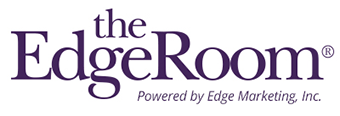by Tanya Amyote
Diversity and inclusion are more than buzzwords in today’s climate of “wokeness” and “cancel culture.” They are meaningful and moving targets. They are actionable terms to describe an ideal and attainable goal. They are the very building blocks of a healthy business with happy employees serving satisfied clients.
A review of your organization’s internal demographic data can yield insight into your employees’ gender identity, age, race and any intersectionality of all of the above. That concrete data can shed light on the diversity – or lack thereof – within the organization. It can also bring about awareness of positive adjustments to hiring and advancement practices, such as blind assessment tools to battle unconscious biases and additional training for those in positions of power or decision-making. It can also point to a lack of diversity in specific departments or organizational levels.
What that concrete demographic data cannot tell you, though, is the degree to which your organization is actively nurturing a sense of inclusion among the members of each demographic segment and intersection.
According to Stanford University researchers, three key aspects of inclusion in the workplace are:
Objectivity:
Do your employees feel that your firm’s policies, practices and promotions are fair, transparent, and universally applied?
Growth Mindset:
Do your employees feel that they are given opportunities to grow, evolve and increase their own value within your organization? Is their growth supported through mentoring and professional development or education?
Belonging:
Do your employees feel safe, respected and free to be their authentic selves in the workplace?
How can you as a business owner ensure that your organization is fostering a culture of inclusivity? Here are three ideas to consider:
Anonymous surveys:
A surefire way to check the pulse of your organization’s climate is through anonymous surveys. Your team is much more likely to share their true feelings if you foster a culture of openness, honesty and collaboration. Throw in the option to remain anonymous and you’ll quickly get a baseline for how your firm is doing with regard to employee satisfaction, retention and the potential for attrition.
Mindful scheduling:
The Law Society of Ontario canceled the March solicitor exams due to a potential leak of test materials. This led to the exams being rescheduled during the month of Ramadan, observed by practicing Muslims through strict sunrise-to-sunset fasting, prayer, reflection and community. The situation highlights the complexities of scheduling in a multicultural society.
Another aspect to keep in mind is location, location, location: That team retreat sounds like a fantastic opportunity but, if the meeting room can only be accessed via a flight of stairs, it could pose a problem for anyone with respiratory, cardiac or mobility issues.
Employee resource groups (ERGs):
According to Business Insider, HR-sanctioned groups can be formed based on any number of criteria including common demographics, life stage or even job function. These groups can provide opportunities such as top-down and bottom-up mentoring. For example, Rajesh with 25 years of experience in sales could provide mentoring to newcomer Taylor who, in turn, offers social media or SEO guidance to Rajesh.
ERGs offer opportunities for employees with shared identities or life experiences to communicate and collaborate, leading to increased effectiveness and productivity.
An ERG can work to raise awareness of its members’ shared experiences, through acting as a resource for colleagues within the organization as a whole or in working with the firm’s leadership team to influence recruiting and hiring practices.
As firms allocate more time and resources to diversity and inclusion initiatives in 2022, it’s crucial to remember that your employees are not just boxes to tick on a list of quotas.
In the words of Maya Angelou, “Do the best you can until you know better. Then, when you know better, do better.”
About the Author
Tanya Amyote joined the Edge team in December 2016 as marketing assistant, Excel guru, and token Canadian.
As a person with osteogenesis imperfecta (brittle bone disease), Tanya is an outspoken advocate for diversity, inclusion and accessibility.



